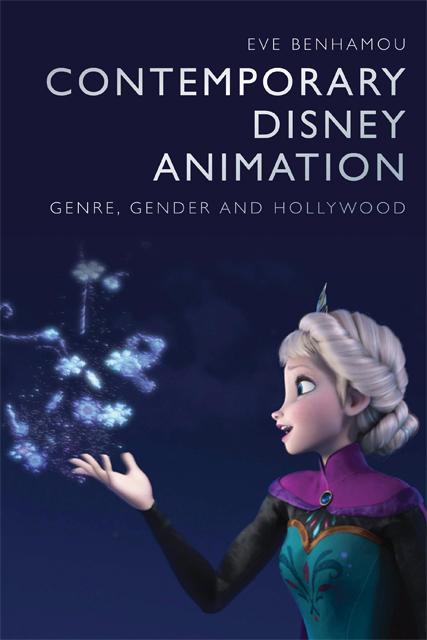3 - The DreamWorks Formula and the Post-feminist Disney Couple: Tangled’s Romantic Parodies
Published online by Cambridge University Press: 14 July 2023
Summary
No one would have guessed that an ogre named Shrek, whose roar was feared throughout the land, would save the beautiful Princess Fiona. True love’s kiss led to marriage and ogre babies … And they lived happily ever after. (The opening fairy-tale book of Shrek Forever After, Mike Mitchell, 2010)
In May 2010, DreamWorks released Shrek Forever After, the fourth opus of the ogre’s adventures, which closed a decade of irreverent, cartoonal computeranimated fairy-tale parodies. In its opening, the film self-reflexively acknowledges the impact of its own fairy-tale blueprint: it starts with a revised version of the iconic storybook introduced in the first film, now featuring unlikely hero Shrek, Princess Fiona and their ogre family, all living ‘happily ever after’ in the highly intertextual, contra-diegetic kingdom of ‘Far Far Away’. Recalling the main events of the three previous instalments, the opening book also highlights the central position Shrek (Andrew Adamson and Vicky Jenson, 2001) has acquired within fairy-tale cinema, replacing Disney as a reference point. A few months later, Disney released Tangled (Nathan Greno and Byron Howard, 2010), its first computer-animated fairy tale and arguably the studio’s most direct attempt to both imitate DreamWorks’ take on the genre and reclaim its own generically iconic territory. While The Princess and the Frog (Ron Clements and John Musker, 2009) initiated the late 2000s revival of the Disney formula through a strikingly nostalgic prism, Tangled represented an overtly more parodic approach. This chapter focuses on the parodic frameworks employed in Tangled, and most particularly the ways in which Disney’s film reappropriates DreamWorks’ specific type of tonal and generic parody.
The film focuses on Rapunzel (Mandy Moore), a princess whose long golden hair has magical healing powers. Kidnapped as a baby by villainous Mother Gothel (Donna Murphy), she is kept hidden in a tower, far from her kingdom – not unlike Princess Fiona. Fascinated by the lanterns released every year on her birthday, she decides to finally venture out when she is about to turn eighteen years old, with the help of a cunning thief known as Flynn Rider (Zachary Levi). Not unlike Shrek, he reluctantly agrees to act as her guide on her way to the kingdom.
- Type
- Chapter
- Information
- Contemporary Disney AnimationGenre, Gender and Hollywood, pp. 77 - 99Publisher: Edinburgh University PressPrint publication year: 2022



